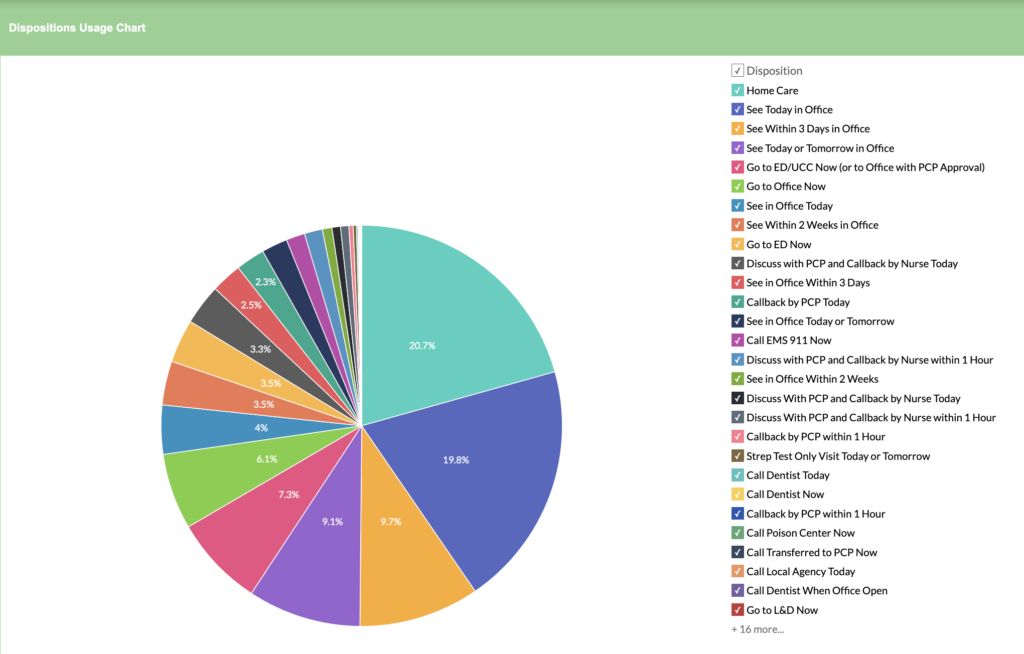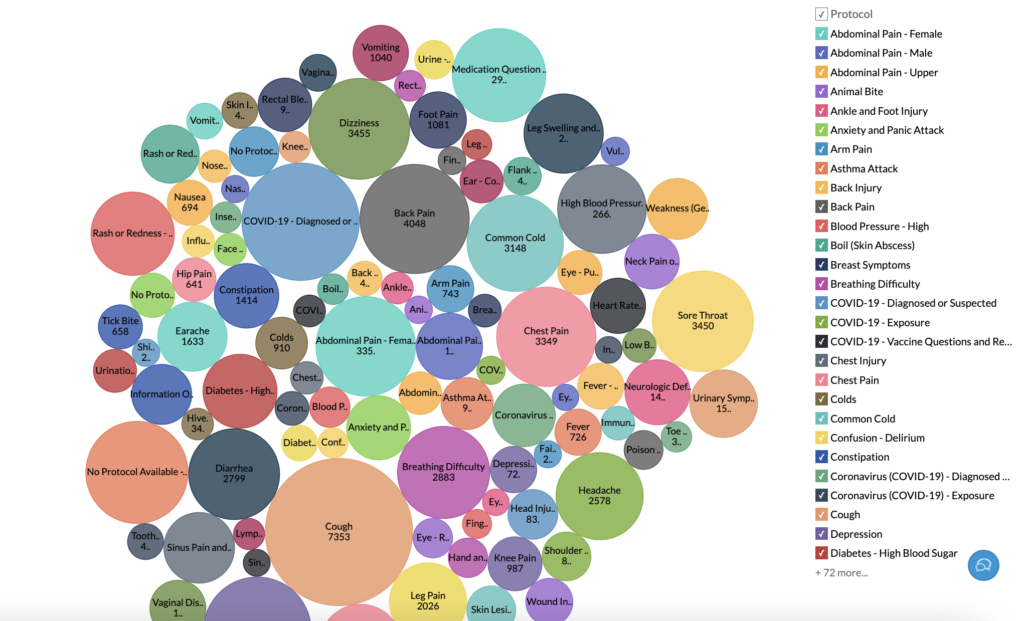As a hospital network grows, it can be difficult to standardize health care. This is especially true when it comes to nurse triage, where patient callers are evaluated on their symptoms and instructed on the types of care they should seek, either from their PCP, the ER, or at home. Standardizing nurse triage doesn’t simply come down to assessing who’s answering your patient phone calls — it’s also about the system they use to evaluate patient symptoms. This was the impetus for one health system to implement our easy-to-use, HIPAA-compliant nurse triage software, myTriageChecklist. Read on to learn more about how it helped them provide standardized care and improved patient outcomes.
Our Client
This East Coast-based healthcare organization partnered with us back in 2014 because they wanted to make sure that their nurses were giving patients consistent, appropriate dispositions. Our software offered this consistency in two main ways.
First, it evaluated patient symptoms and their severity using Schmitt-Thompson protocols. These are considered the gold standard of triage, and come in both daytime and after-hours versions.
Second, myTriageChecklist provided an intuitive user interface for nurses to document these protocols and patient notes thoroughly. This data was then able to be shared directly with specific network providers’ in-house EMRs.
Prior to myTriageChecklist, roughly 80 percent of the calls our client received would have no protocol assigned. Our team was able to help them implement and begin using our software in under an hour. Now, almost nine years later, it’s helped them properly address 150,000 patient calls, giving their nurses and physicians more time to focus on in-house patient care.
Patient and Provider Benefits
MyTriageChecklist is a powerful tool for patients and providers alike. It ensures continuity of care, and directs patients to the appropriate care. All too often, patients head to the ER for symptoms that aren’t really urgent. As our client’s protocol logs show, most of their patient callers were able to have their symptoms diagnosed by a primary care physician or managed through home care.

Having a valuable combination of nurse triage software and trained triage nurses will guide patients to the appropriate providers. This ultimately has financial benefits for provider networks, as ERs aren’t overwhelmed unnecessarily, patient outcomes are improved, and costs are minimized.
Nurse Performance and Call Volumes
Our software does more than improve patient outcomes. It also gives providers insight into the performance of their nurses. It does this through reporting features that demonstrate the types of protocols that nurses assign, the types of referrals they give, and specific call volumes over given periods of time.
Protocols
We know from our experience what the typical percentages are for specific triage protocols, and compare them against those of our clients — including the one in this case study — to see if there are any abnormalities. When there are, it may be an indication that additional nurse training is needed.

Referrals
It’s important to know that nurses are evaluating symptom severity and directing patients to the appropriate care in the appropriate windows of time. MyTriageChecklist keeps logs of what level of care people are referred to and why.
Call Volumes
Knowing when patients would tend to call more frequently — and what symptoms they would tend to call about — allowed our client to schedule their nurses to meet anticipated call volumes. This meant they were less likely to be over- or understaffed, and less likely to see delays in care.
About MyTriageChecklist
If your provider office or health system were to adopt this technology, here’s how it would be applied.
How It Works
When a patient calls, who usually answers first? Whether it’s a nurse, a front office team member, or an Answering Service Operator (ASO), the initial goal is the same: evaluate the patient’s reason for calling and their associated symptoms before sharing that information with a triage nurse.
Your triage nurses will call patients back within timeframes that are based on the urgency of their calls, at which point they’ll start to use myTriageChecklist by entering symptom keywords to access the correct protocols. Your nurses will continue using protocol checklists to ask all of the questions needed to direct your patients to the appropriate levels of care. At the same time, our telephone triage system will document all of the details from these interactions, then share this information directly with any referred providers following the end of each call.
Note: MyTriageChecklist contains over 650 adult and pediatric protocols that are updated annually. It includes protocols for COVID-19 variants and vaccinations, and can easily integrate with any telehealth services you may currently offer (or plan to offer).
Key Features
Besides Schmitt-Thompson protocols and the specialized reporting we mentioned above, our software offers key features that make nurse triage intuitive, accurate, and effective.
First, it’s entirely web-based, and can be up and running for your team within 30 minutes.
Your nurses will have access to a dashboard that will include medication dosage charts and brief patient histories. They’ll also be able to email or text handouts of care advice to callers, and can integrate this outreach with CRMs like Salesforce for high-quality patient engagement.
Dispositions that are generated will always match the associated patient symptoms, regardless of which member of your care team answers the phone. This standardization and personalized care have been noted for improving quality of these dispositions, shortening response times based on the urgency of patient calls, and improving patient health outcomes. Plus, they decrease your liability when nurses aren’t tempted to give diagnoses over the phone.
Your team will have a nurse manager who will provide unlimited training and feedback on how to use our software. All new users receive a 30-day free trial without any credit card requirement.
Ready for Your Free Trial?
If you’re ready for standardization in your nurse triage and the same benefits that our health system client experienced, let us know! Health care may not be a one-size-fits-all approach, but our software can scale with your needs and provide opportunities for continuous improvement. Contact us today to discuss your specific practice, and learn more about how to get myTriageChecklist up and running.
About TriageLogic
TriageLogic is a URAC-accredited, physician-led provider of top-quality nurse telehealth technology, remote patient monitoring, and medical call center solutions. Founded in 2007, the TriageLogic Group now serves more than 12,000 physicians and covers over 25 million lives nationwide.





